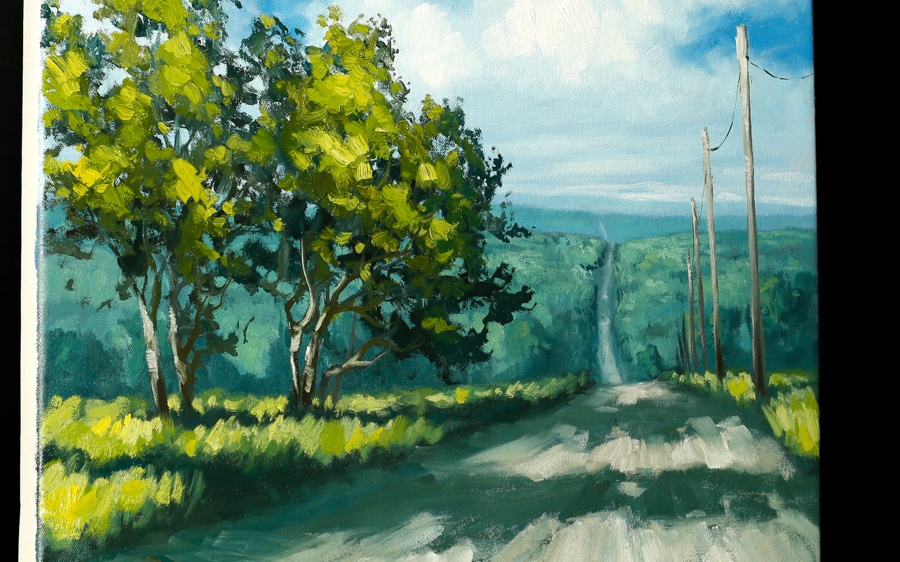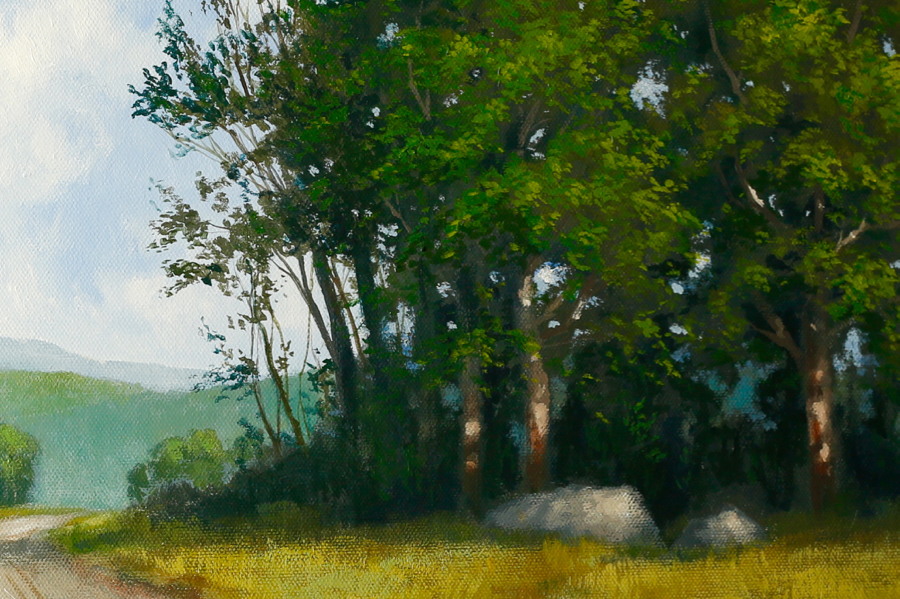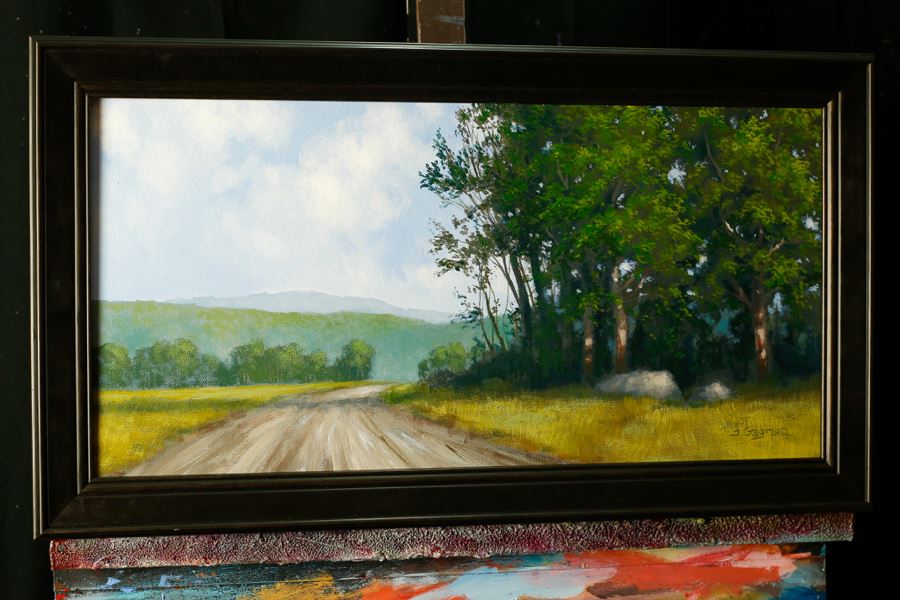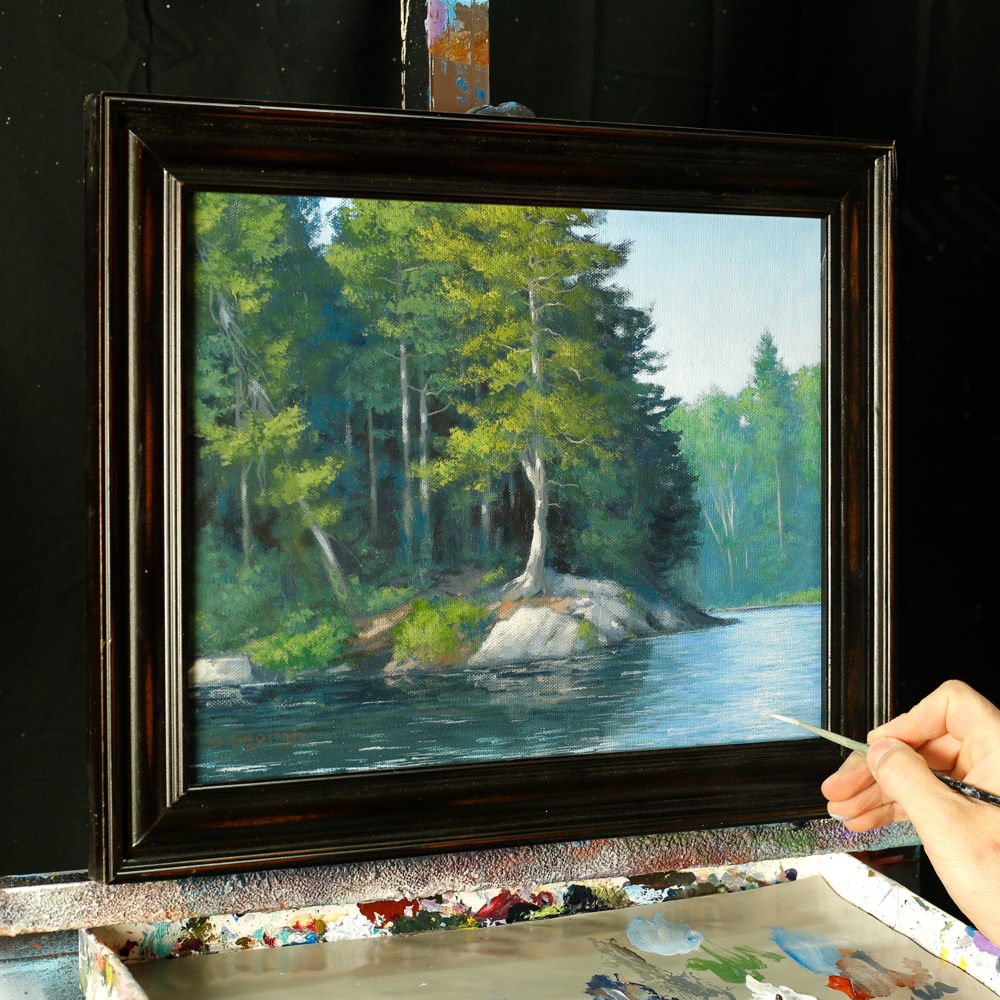Join me in Maumee, Ohio as I do a free painting demonstration and have a display of my work at American Frame Showroom. November 3rd starting at 3PM.
I’ve been getting ready to display some of my work at the American Frame gallery in a few weeks. I’ve been going back and forth between some of my older work and some of my new stuff, debating on what to send them.
I’m also trying to bang out a big painting a day. Over the past two days I’ve done two really large cloudscapes. The one you see here took me about 90 minutes to complete from start to finish. It’s a 30 X 48 inch canvas. This is probably my favorite painting I’m sending for the show.
One thing that I’ve seen over years of doing workshops is that we have a tendency to over-paint. In the workshop setting that is easy to do because everyone paints at a different pace and you don’t want to just sit there and not paint. So in that setting it’s different. Plus I’m there to tell you to stop it! 🙂
In your home setting it’s hard to tell when a painting is done. What I used to tell people is that “it’s done when you feel happy looking at it.” But after thinking about this I’m going to give you all a more technical answer.
The painting is done when you’ve created a variety of values, subtle color variations, good contrast, and mood. So what I suggest, is asking yourself these questions every hour or so while you paint. Because it might be “done” before you thought it was.
1. How many values do I see in this painting? Do I cover a good range or am I stuck in midtone value purgatory? If you have a good value range you may be closer to done than you thought. It might be a matter of refinement than adding new paint layers.
2. Do I have good contrast? Contrast creates depth, light, shadow, and 3 dimension. This kind of goes along with values, but contrast can also be created with color (warm/cool combos etc). A shot of reddish or purplish can make green pop and vice versa. Sometimes adding in subtle compliments can really spruce up your contrast.
Don’t miss out on this week’s special priced lessons! 50% off these two great painting lessons. Click the images to go to the lesson page.
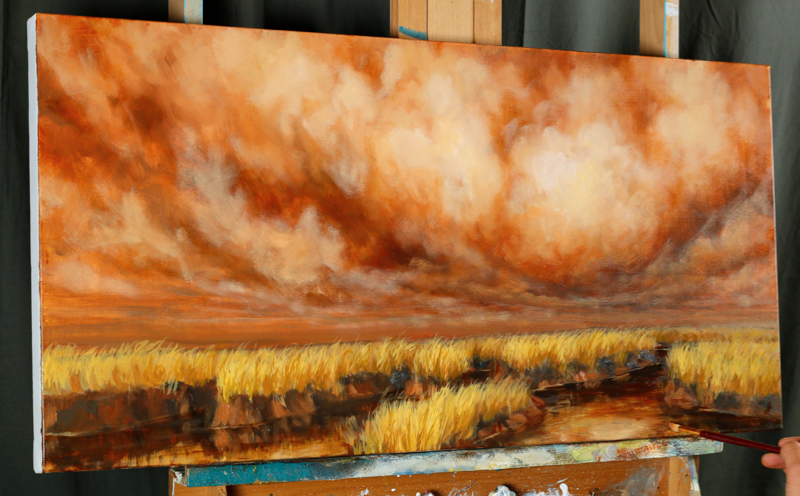
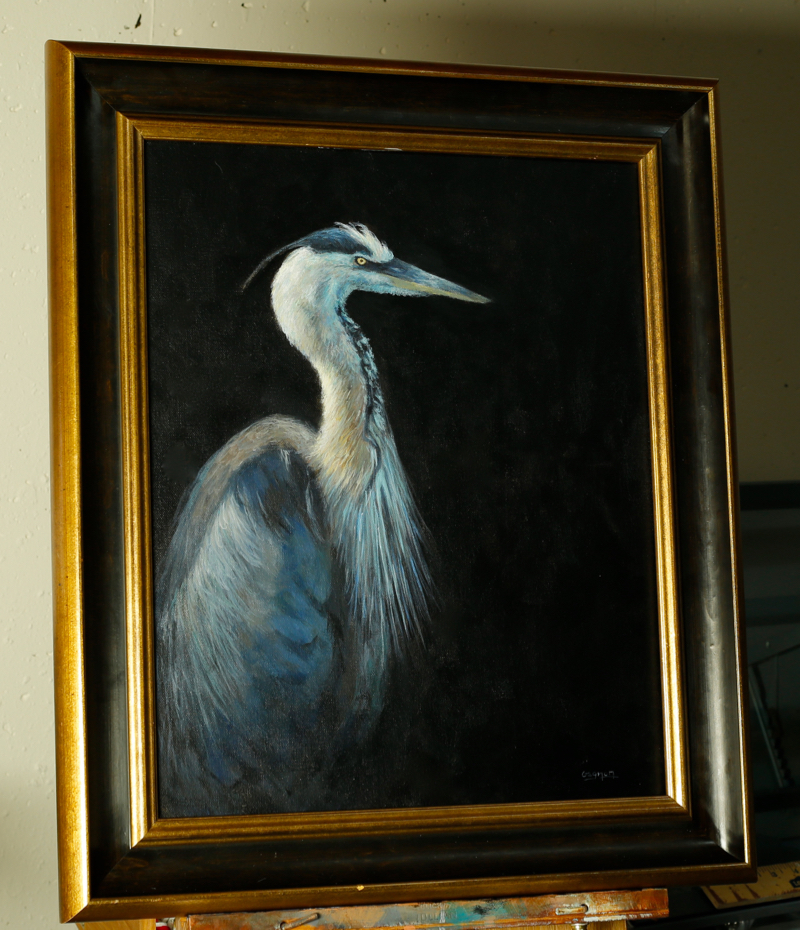
3. Does my painting have big voids? Empty space can be powerful, or it can be distracting. Balance in a painting doesn’t mean symmetry. Big open spaces, elements all on the same plane, lack of angles can hurt your composition. If you leave empty space, make sure it is to aid in the composition of the painting (I’ll talk about this more on another day.)
4. What is “fill in blank” missing? Does your tree need highlights? Shadow? Does your apple have reflected light? Take a look at the important elements and ask what’s missing. If you can’t think of anything it’s probably done.
If you don’t stop to analyze your painting every so often then you may have missed the point at which it was done, and you end up over-painting it.
Happy Painting Everyone!


